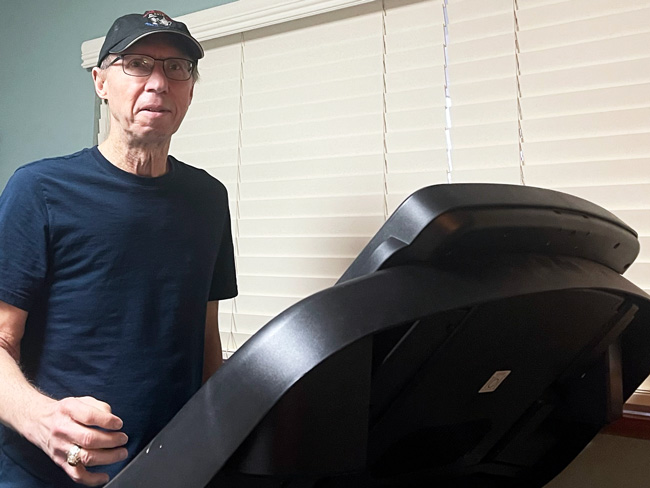At 72, Mike Erskine felt good. He was active and even lifted weights 3 times a week.
He knew he had a heart condition but not one that causes trouble for most people. And, his doctors monitored it.
Then one day, a watchful doctor saw an issue.
Heart condition wasn’t a concern — until it was
Since his diagnosis at 29, Erskine had lived with mitral valve prolapse.
The mitral valve controls blood flow on the left side of a person’s heart. Prolapse happens when the flaps of the mitral valve become floppy and don’t close tightly.
Many people live their whole life with this condition without a problem. However, now, Erskine’s valve was leaking. It needed repair.
So, Erskine underwent surgery at Kaiser Permanente Sunnyside Medical Center in Clackamas, Oregon.
A recovery choice
After the surgery, Erskine needed to rebuild his heart health under medical supervision. This process is called cardiac rehabilitation. It includes exercise and health education.
Erskine was given a choice. He could go to a medical facility for his rehab sessions. Or, he could enroll in a virtual program and do the rehab at home.
“The virtual option can make it easier to participate and complete the rehabilitation program,” said Ross Vimr, MD, Erskine’s cardiologist at Kaiser Permanente. “It frees patients from the time of driving to the clinic, and it can be a better fit for their schedules.”
Erskine chose the virtual option because it was much more convenient than driving over to the clinic.
How technology supports success
Erskine’s virtual rehab included a daily 30-minute full-body workout that he could do anytime.
“The workouts were perfect for building myself back up,” Erskine said. “They provided a structured way to exercise and monitor my progress, which was very motivating.”
